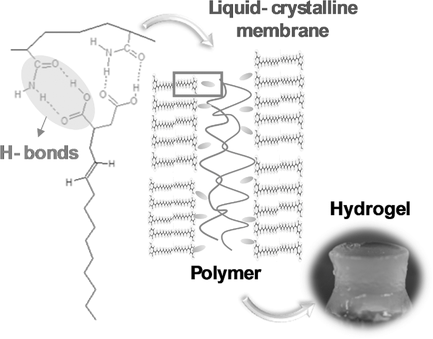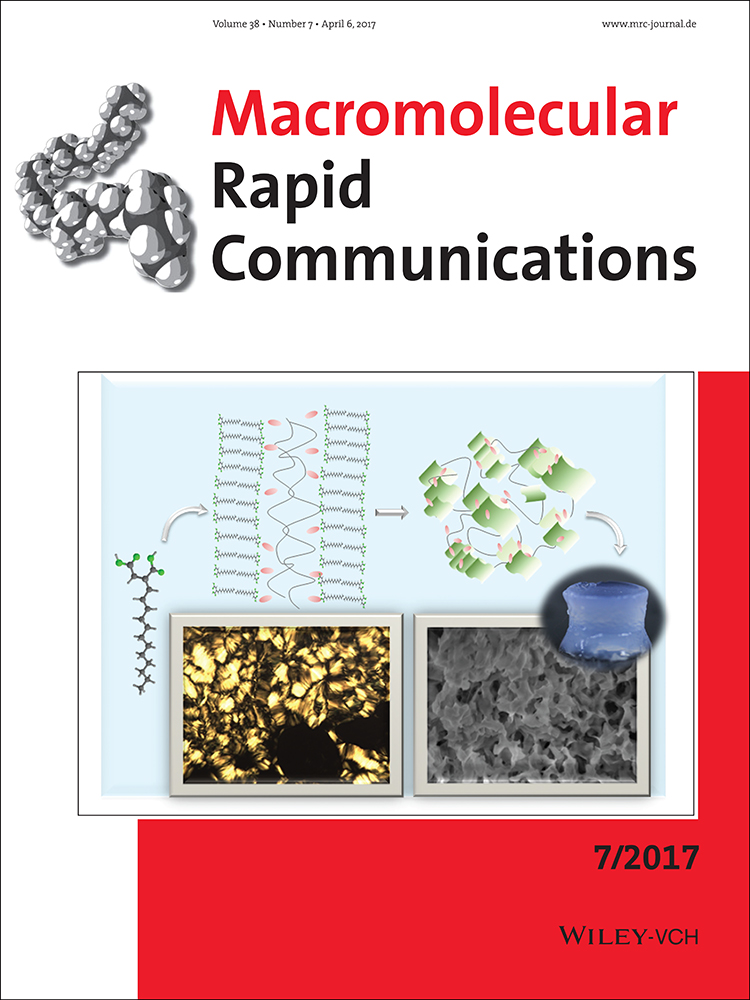Self-Assembled Liquid-Crystalline Membranes Form Supramolecular Hydrogels via Hydrogen Bonding
Abstract
Developing simple methods to organize nanoscale building blocks into ordered superstructures is a crucial step toward the practical development of nanotechnology. Bottom-up nanotechnology using self-assembly bridges the molecular and macroscopic, and can provide unique material properties, different from the isotropic characteristics of common substances. In this study, a new class of supramolecular hydrogels comprising 40 nm thick linear polymer layers sandwiched between nanolayers of self-assembled amphiphilic molecules are prepared and studied by nuclear magnetic resonance spectroscopy, scanning electronic microscopy, small angle X-ray diffraction, and rheometry. The amphiphilic molecules spontaneously self-assemble into bilayer membranes when they are in liquid-crystal state. The hydrogen bonds at the interface of the nanolayers and linear polymers serve as junctions to stabilize the network. These hydrogels with layered structure are facile to prepare, mechanically stable, and with unique temperature-dependent optical transparency, which makes it interesting in applications, such as soft biological membranes, drug release, and optical filters.





